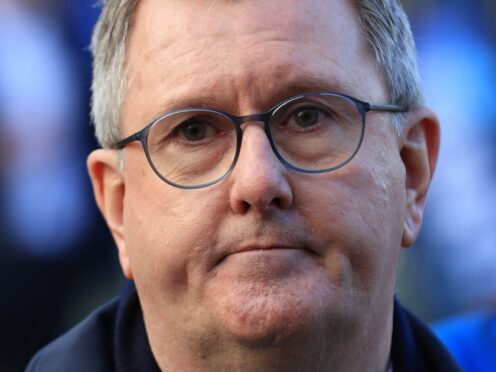
DUP leader Sir Jeffrey Donaldson has questioned the value for money of the £40million Operation Kenova which has not seen any prosecutions pursued.
He was speaking after the interim report was published in the investigation into the activities of the Army’s top agent inside the Provisional IRA’s internal security unit during the Troubles, an individual known as Stakeknife.
Kenova ran for seven years at a cost of approximately £40 million, initially led by Jon Boutcher before he went on to become the chief constable of the PSNI.

Some 32 people, including former police, former military personnel and people linked with the IRA, were considered for prosecution on a range of charges from murder and abduction to misconduct in public office and perjury.
However, Northern Ireland’s Public Prosecution Service (PPS) found there was insufficient evidence to pursue cases.
Sir Jeffrey also said that while lessons “can always be learned for the security services”, he added the “work of the police, army or the security services was a just cause”.
He also said that 90% of deaths in the Troubles were perpetrated by terrorists, and urged against “any rewriting of history”.
“Whilst having lessons to learn for the Government, the report reminds us that the intelligence agencies had infiltrated the PIRA to such an extent that they rendered the organisation almost inoperable,” he said.
“Working within the security forces was a role of honour in the Troubles. It was a courageous role undertaken by people who wanted to defeat terrorism, protect the entire community, and secure peace for us all.”
Sir Jeffrey described £40 million as a “huge bill to investigate the activities of one agent in the PIRA”.
“It begs the question if that money might have been better spent on pro-active policing today,” he said.
“It is even more disappointing that on the back of such an expensive investigation, the PPS has failed to secure a single prosecution.
“In the coming days, we will be asking more questions of those tasked with making decisions about Troubles related prosecutions in Northern Ireland.
“Where evidence exists against terrorist perpetrators, innocent victims must not be denied access to justice. This principle cannot be compromised.”

Enjoy the convenience of having The Sunday Post delivered as a digital ePaper straight to your smartphone, tablet or computer.
Subscribe for only £5.49 a month and enjoy all the benefits of the printed paper as a digital replica.
Subscribe